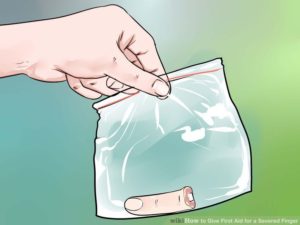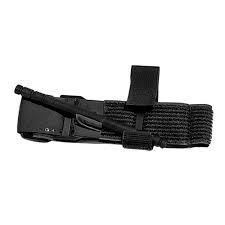TRAUMA – BLEEDING AND WOUND MANAGEMENT
AMPUTATION INJURIES
Management
- Amputations may cause very serious bleeds depending on the body part involved
- The bleed should be managed by following bleed control principles for external bleeding
- A tourniquet may be needed for amputations of arms & legs (see below)
- Place the amputated body part into an airtight plastic bag and float in a container filled with ice & water
- ensure no water or ice comes into direct contact with the body part.
- If no ice or water is available, try to keep the body part protected by placing it into some sort of container and keep it cool by surrounding the container with items such as instant ice packs or frozen vegetables.
- Do not wash the part even if it is dirty.

TOURNIQUETS
- A tourniquet should only be used for life-threatening bleeding from a limb, where direct pressure has failed to control the bleeding or where there has been an amputated or partially amputated limb where bleeding is severe.
- It should be applied above the amputation or injury & be applied following the manufacturer’s instructions or 5 cm above the bleeding point
- A tourniquet should not be applied directly over a joint or the wound itself, if possible.
- The time the tourniquet was applied should be noted and communicated to emergency personnel.
- Avoid covering the tourniquet with cloths or other bandages
- Commercial tourniquets are more effective than improvised tourniquets, however, a first aider should improvise using material as roller bandages, triangular bandages, rope, belts, items of clothing and so on if nothing else is available. This should be tightened by twisting a rod or stick under the improvised tourniquet band just as in the commercial tourniquets.
- If bleeding continues, a second tourniquet (if available) might need to be applied to the limb above the first.

